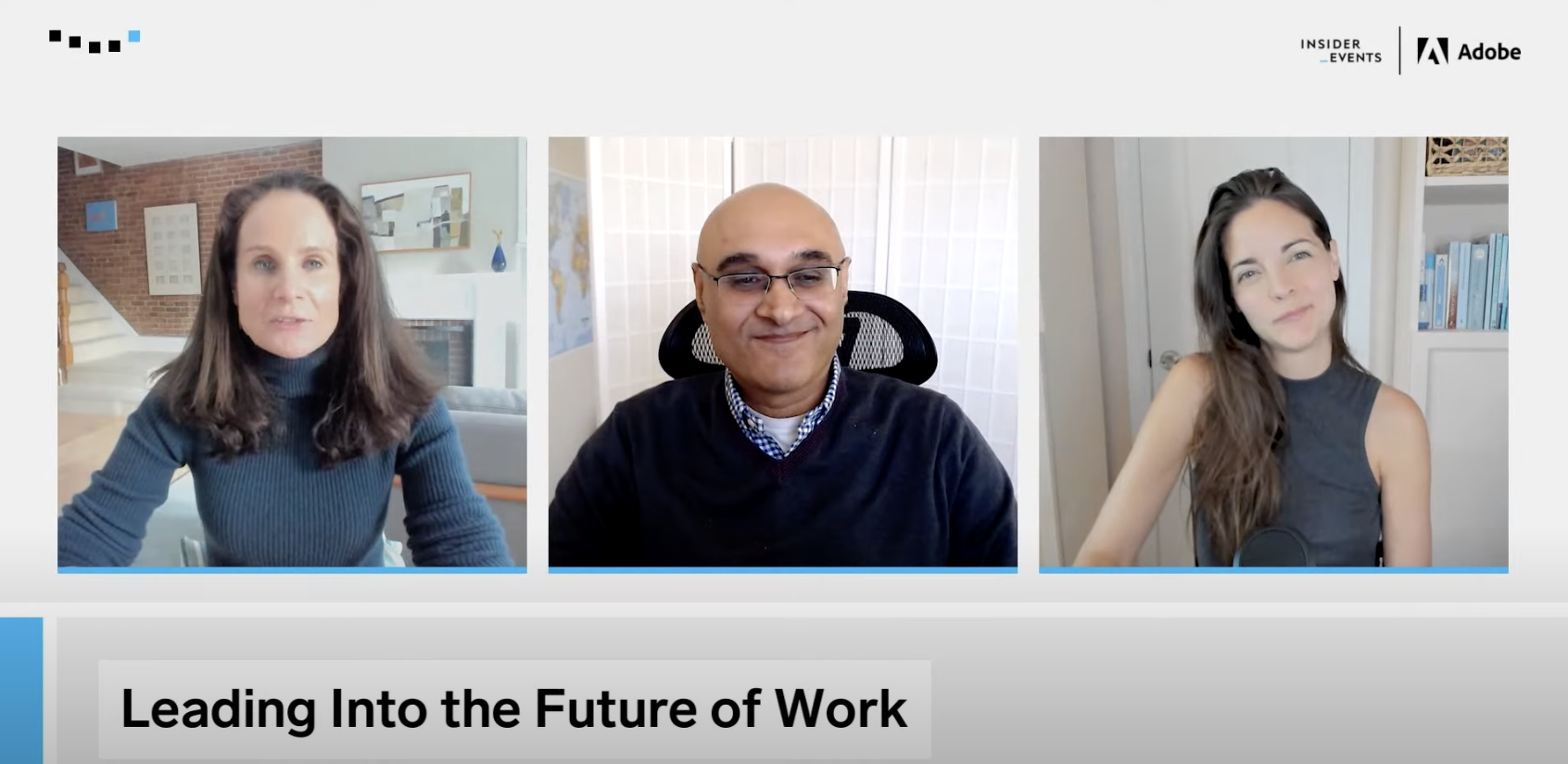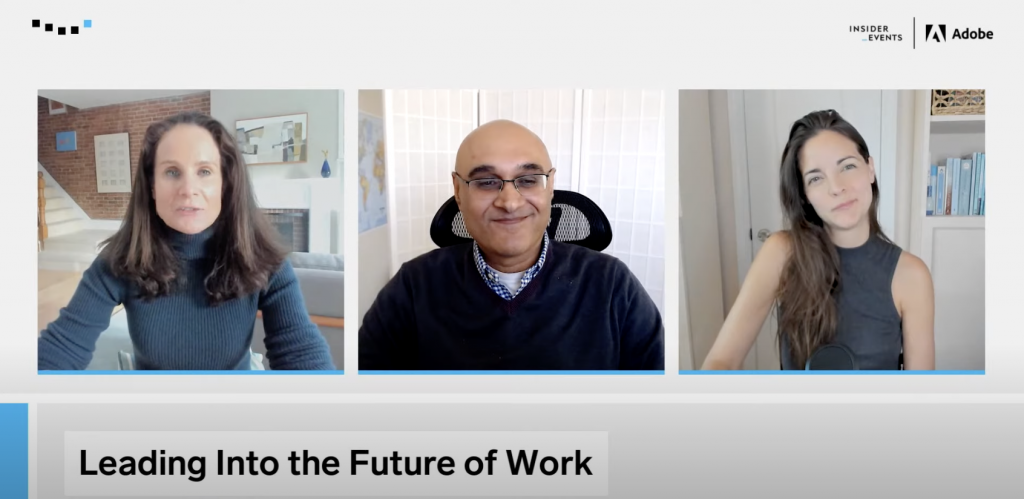
- As the Great Resignation continues to dominate the workforce, attracting and retaining workers is a key priority for organizations.
- Focus on creating a company culture that offers flexibility and listens to current employees, experts said.
- This was part of Insider's "Leading Into the Future of Work," presented by Adobe, on Jan. 20, 2022.
A large number of the workforce is on the hunt for new employment. According to Bankrate's August 2021 Job Seeker survey, 55% of Americans said they're either somewhat likely or very likely to find a new job in the next 12 months.
"If you are a hiring manager or a leader, you cannot expect the future to look like the past," said Kathryn Minshew, founder, and CEO of The Muse, during the January 20 session, "Reimagining the Talent Model," a part of the "Leading Into the Future of Work" event presented by Adobe.
"We're seeing the rise of the values-based job seeker, and we're seeing businesses starting to realize that to retain their existing people — not to mention attract new ones — they have to behave very differently," Minshew said.
Minshew also said that the pandemic acted as a "collective shock" that made people more conscious of their values and preferences. As a result, workers are voluntarily choosing to leave their organizations in search of better conditions, such as flexible hours, better pay or benefits, and managers that treat them with respect.
The shift in the balance of power between employees and employers (in favor of the candidate), as well as the unprecedented competition for top talent, are giving workers more power to advocate for their work interests, she added.
While many experts call this massive workforce reshuffle the Great Resignation, Arvind Malhotra, a professor at UNC's Kenan-Flagler Business School, said it's more like the "Great Migration" toward jobs that offer flexibility and autonomy.
Workers are primarily searching for four types of autonomy: location, time of work, day-to-day tasks, and level of collaboration.
To recruit and retain top employees, leaders must focus on creating a diverse and inclusive work environment. The faster companies figure out how to explain their culture through actions, Malhotra said, the easier it will be for them to attract new talent.
The pivot to remote and hybrid work pushes companies to break down their culture using specific language instead of face-value selling points like "we have a beautiful office" or "we have ping pong table," Minshew added.
Businesses — and their leaders — can create authentic communication around culture by listening to employees and learning about their experiences within the organization, Minshew said. What is it like to work here? What are some things that keep people engaged? What might frustrate people at the company? What are company norms?
Another way to build company culture is to let employees tell their own stories about the company. Minshew said it can be more compelling than "corporate-speak" about a business being an innovative place to work.
"Employees understand that no workplace is perfect," she said. "But you can really go a long way by committing to a few of the most high-priority things and making clear, decisive changes."
For Minshew, she expects to see more GenZ and millennial workers make intentional choices about where they want to work; they're interested in organizations that match their values, offer a community with motivated and respectful people, or meet other personal needs.
"Not every company needs to be the same, but companies do need to have a clear sense of who they want to be, and they need to deliver on the promises that they make to the market," Minshew said. "I think employees and candidates are holding us all accountable."
Dit artikel is oorspronkelijk verschenen op z24.nl
